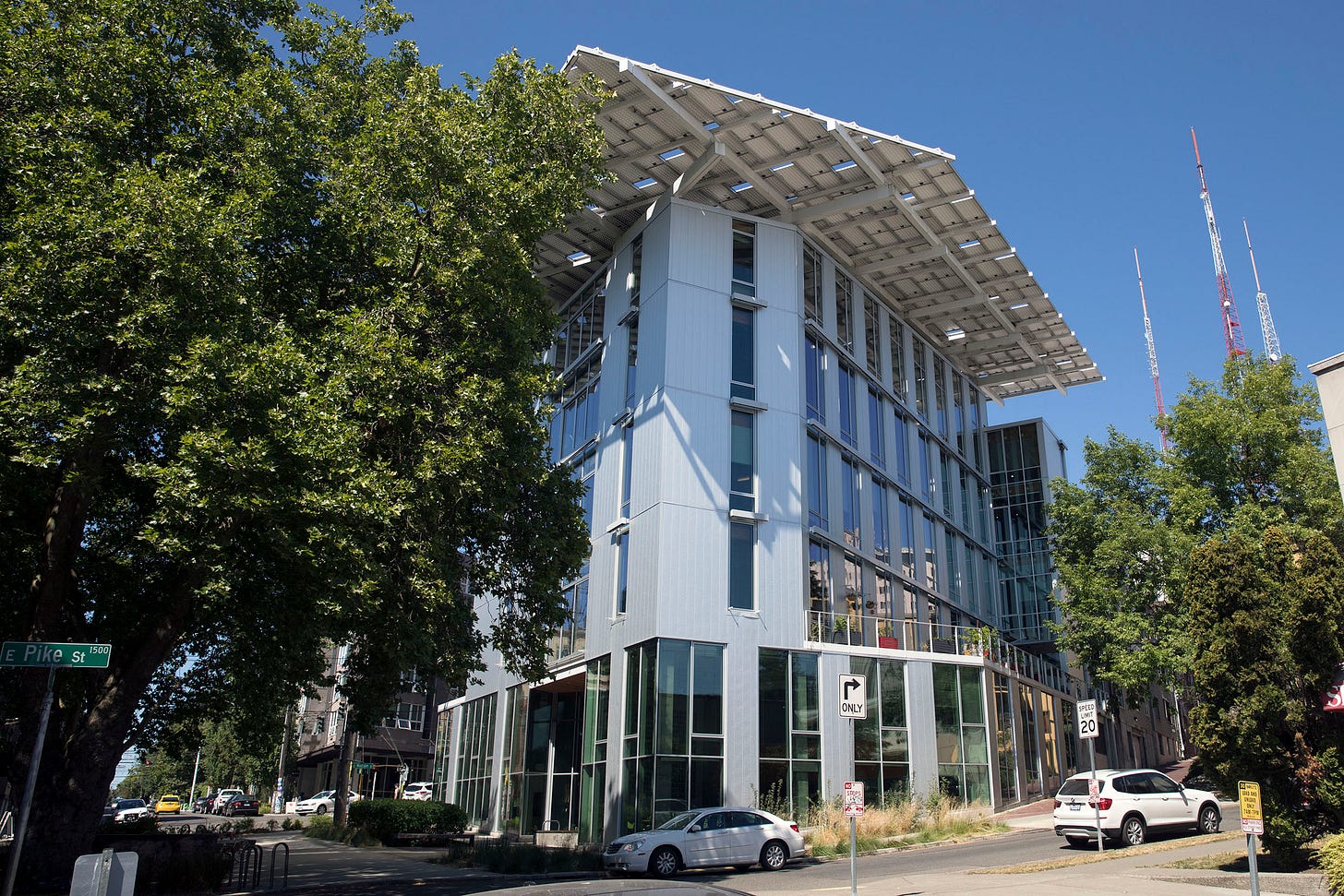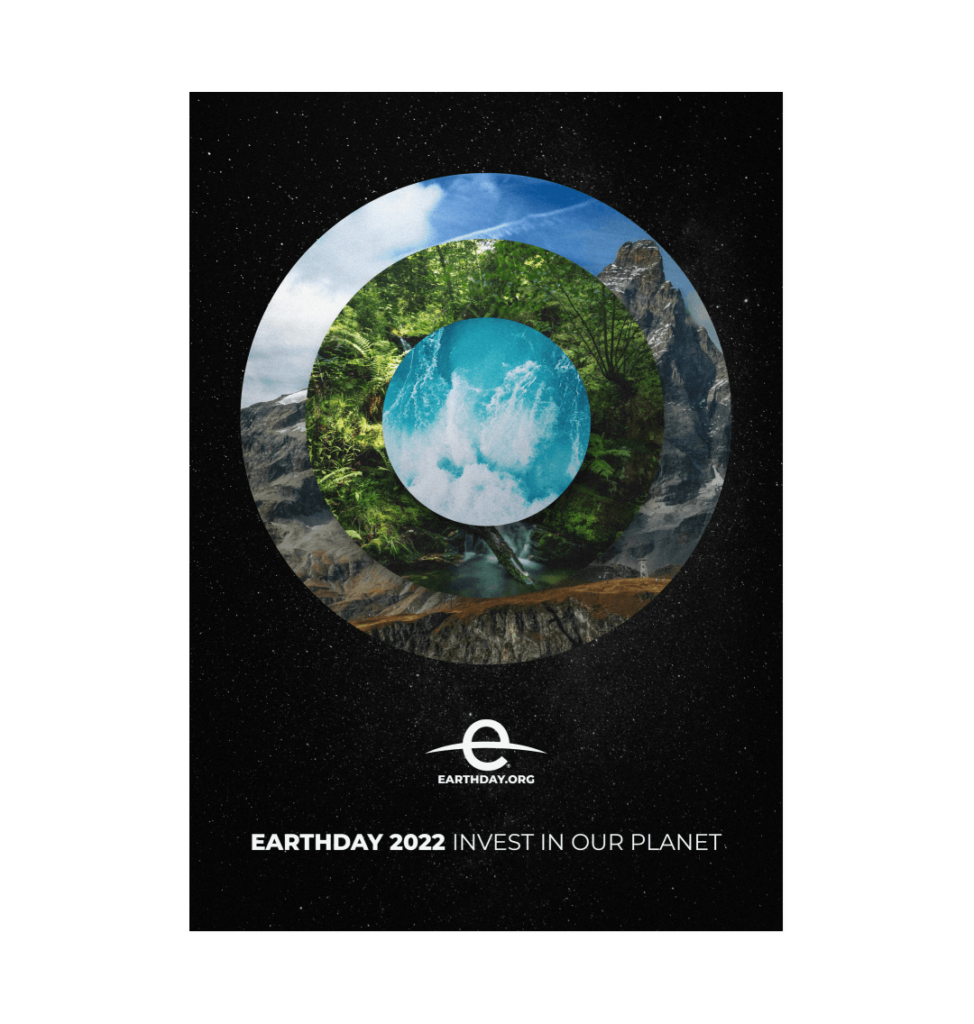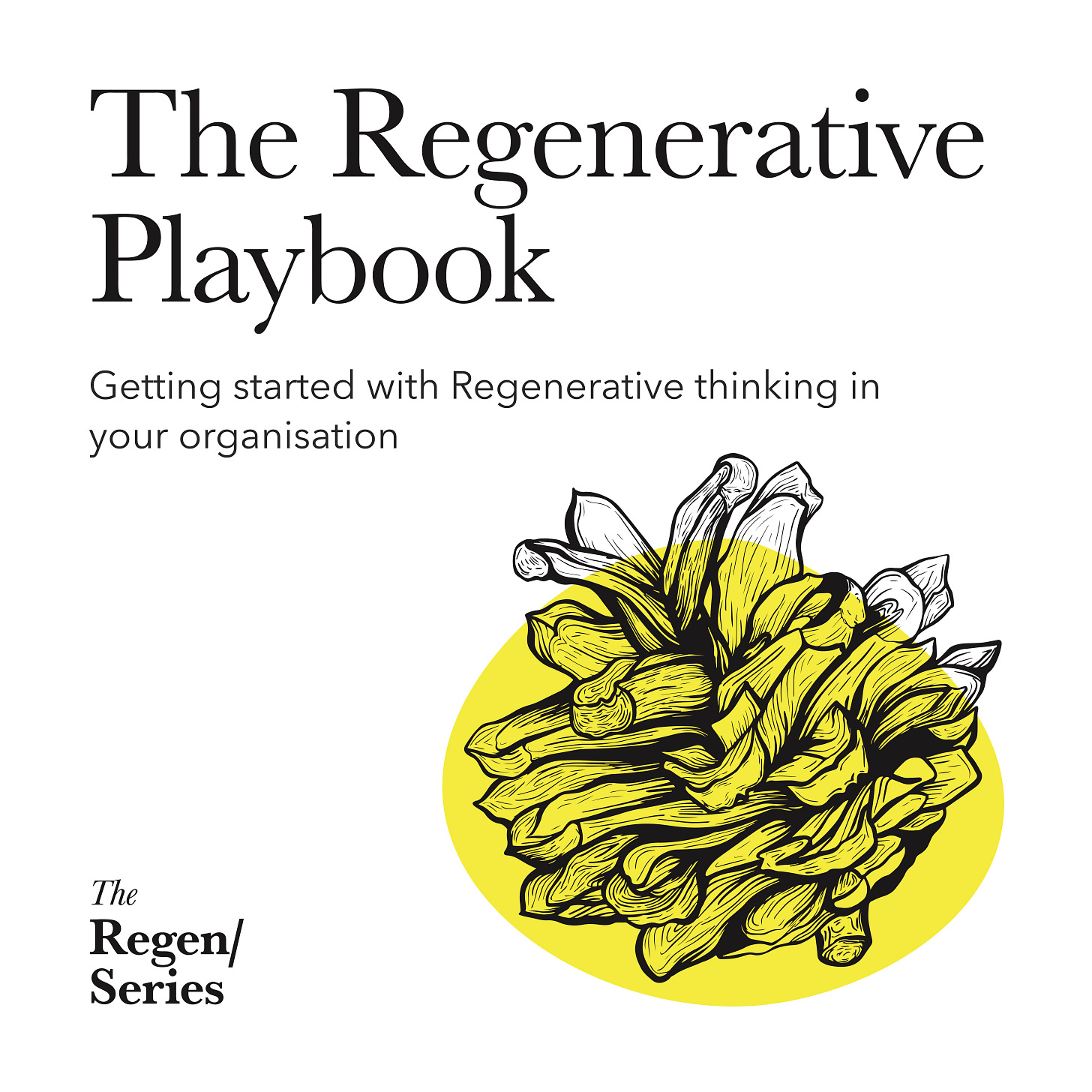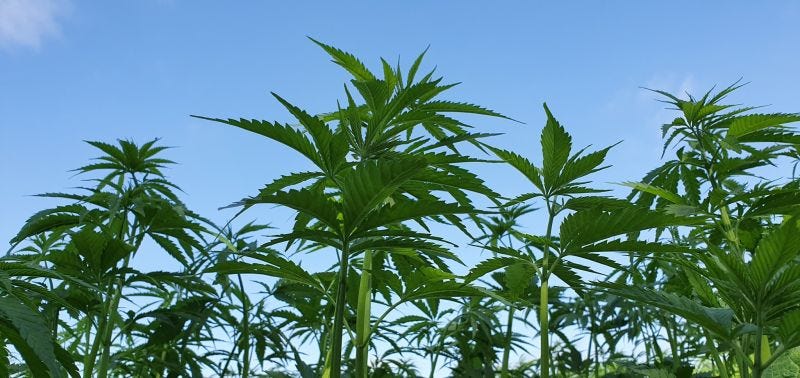Welcome to Regen/ Notes
… a newsletter of regenerative news, stories and more, with a sideways focus on the built environment, curated by Martin Brown and Anna Williamson. It is a companion to our Regen/ Zoom activities where we connect the spaces between regenerative dots, sharing ideas, themes and individuals that invigorate and inspire.
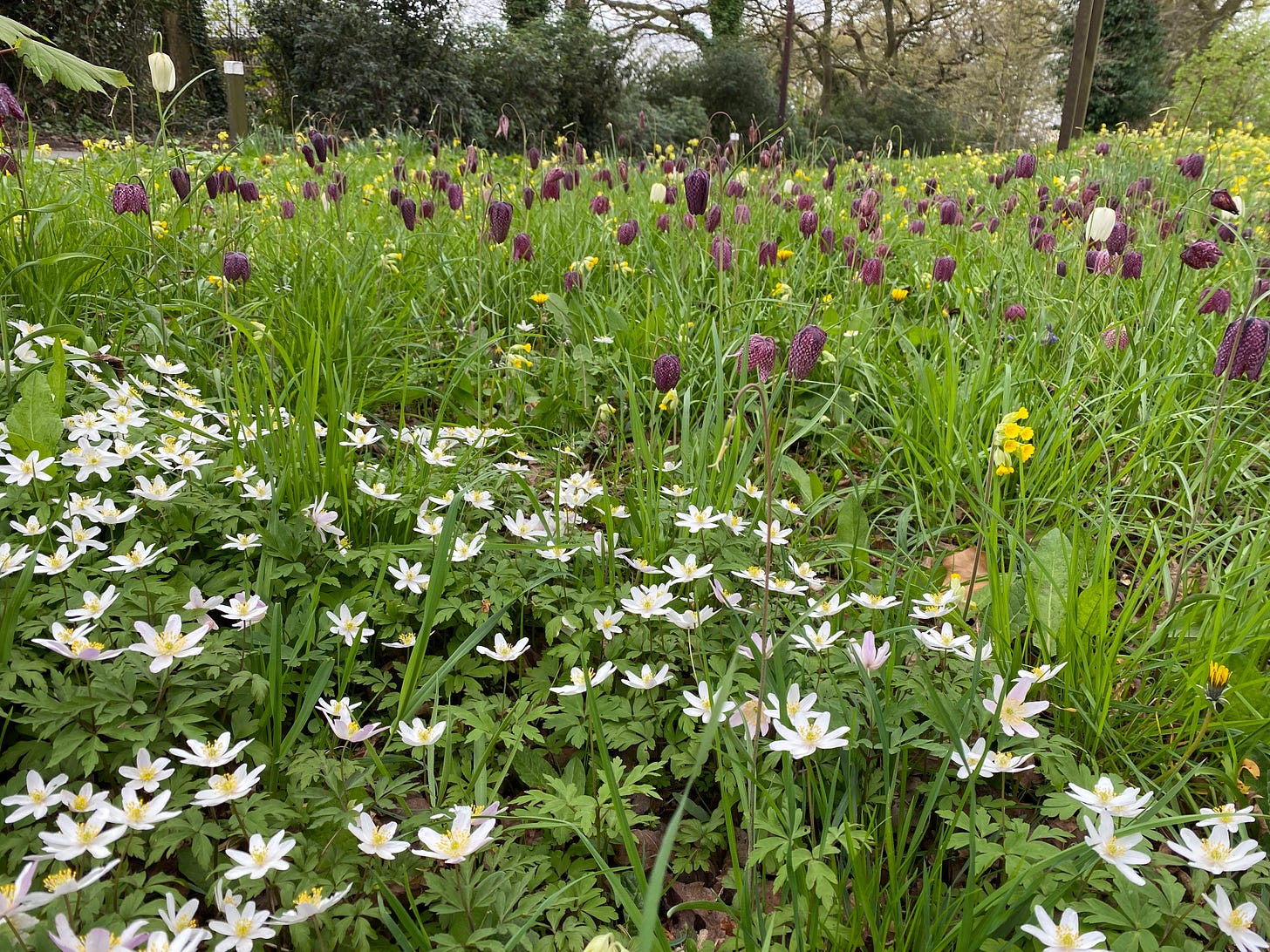
EarthDay
EarthDay was (co)founded in 1970 by Denis Hayes, who over the years has taken EarthDay concept and messages to 180 nations. Later Denis was to be fired by President Reagan for being too enthusiastic and went on to organise the 20th EarthDay anniversary campaign that ‘mobilised 200 million people’. It is now the biggest global secular celebration.
Writing in Patagonia’s Tools for Grassroots Activists, he describes his early years, roaming and hiking around the world in the late 60s and then finding his road to Damascus epiphany in the Namibian desert that set him on an environmental climate change focused career.
“What, I wondered would the world look like if industrialised civilisation had been designed in concert with the fundamental principles of ecology“
That random evening in the middle of the desert turned out to be a great dividing line “when I rolled out my sleeping bag that evening, I was a confused rudderless hitchhiker trying to fall asleep in the middle of nowhere when I rose the next morning I had begun to construct a roadmap for how I would live the rest of my life”
Many years later, as president of the Bullitt Foundation, Denis Hayes conceived and project-managed the world's greenest office building, the Bullitt Center in Seattle. The building was designed to inform, inspire and educate the built environment of deep green, regenerative buildings.
It was here, in the Bullitt Center that I had the privilege of meeting and chatting with Denis on a visit to Seattle in 2015. We discussed his just-published book ‘Cowed' The Hidden Impact of 93 Million Cows on America's Health, Economy, Politics, Culture, and Environment and my then-forthcoming book 'FutuREstorative' Working Towards a New Sustainability, and of course the Bullitt Center building.
Our conversation wasn’t recorded, I took no notes, just relished the chat. My scribbled notes later captured a few of Denis's comments including a line that has stuck with me, and one I have used many times since “when something exists (such as the Bullitt Centre), we can no longer say it is impossible”
In seeking to demonstrate that a building could be a regenerative instrument for improving both people and the planet, Denis chose the Living Building Challenge as the framework to steer the vision of the building. This brilliant framework remains the world's most rigorous sustainable building standard. And yet, requires a ‘regenerative wrap’ around the imperatives to shift the built environment entrenched mindset.
Earth Day 2022
With the theme for Earth Day 2022 as 'Invest in our Planet', we should reflect on why it is so easy to invest in degenerative activities that destroys our planet and lives, yet we struggle to invest easily in activities and start-ups that are regenerative, those that enable life and the earth to thrive.
Paraphrasing Denis Hayes “We’ve made some heroic efforts, but the earth as a whole is in worse shape today than (52 Years) ago, there have been (52) more years of greenhouse gases and species extinction”
The introduction to our Regenerative Playbook echoes this "Sustainability since 1987, based upon the Brundtland definition on 'doing nothing today to compromise tomorrows generation’ has failed and will not arrest the climate and ecological collapse we are witnessing … Regenerative thinking enables us to ask better questions that ensure our organisations, our buildings, products and lifestyles co-evolve and thrive as part of nature”
EarthDay has become a significant milestone for Zoom Regenerative, with our first real session (after my introduction of a zoom lockdown idea the week before) held, as a celebration of Earthday in 2020 that featured, Toby Diggens, Devon, England sharing insights on Rewilding and building design, Carlo Battisti, Bolzano, Italy outlining the Living Building Challenge and Daniella Abreu, Brazil with insights on Renewing Sustainability. Zoom Regenerative has grown over its 45 editions to a strong community seeking a regenerative future.
There are many many events and activities planned around the world to celebrate EarthDay 2022.- check out Earthday.Org. One that I am certainly looking forward to is Journeys in Design's 'Think Global Grow Local' a roundtable focus on soil, seed, and locality, with regeneration and community at heart.
And in recognition that we need to celebrate earth day every day, our local, small Longridge Environment Group, like many other groups around the world, is inviting residents to join in the journey to a green future through sharing #22for2022 green tips and facts.
Place and Hemp
Anna Williamson FRSA, (Regenerative Sustainability Consultant at Limewood Group) shares thoughts around the Regenerative Playbook and the recent Hemp zoom regen session
Often in zR the subject of ‘place’ is raised. Having a sense of place, our place in our village or town and wider, in the world, gives a sense of deep-rooted connection. And dislocation possibly, when we are removed from that.
As we’ve just celebrated Easter I am reminded of how deeply rooted in place names is this festival - and the goddess who inspired the name - is. The Anglo-Saxons worshipped the goddess Eostre, referred to by the Venerable Bede in AD 725, mentioning the indigenous English name of the month: “Eostur-monath has a name that is now translated as ‘Paschal month’, and which was once called after a goddess of theirs named Eostre, in whose honour feasts were celebrated in that month.”
Several English place names of Saxon origin, such as Eastry in Kent, Eastrea in Cambridgeshire and Eastrington in East Yorkshire, are assumed to be derived from Eostre. There is also an etymological link to Ostara or Austra, the spring goddess worshipped by the tribes of northern Europe, after whom the month of April, Ostermonat, was named, and whose existence was verified in 1958, when more than 150 Romano-Germanic votive inscriptions to the matronae Austria-henea were discovered near Morken-Harff in Germany, datable to the second century AD.
Reflecting on the latest zR I am struck by the similarities of things that die and are reborn. Trends that come and go and the reasons why some endure and others don't. Arranged by Tracy Fielding of Tracing Green, we had the benefit of listening to Jamie Bartley and Alex Sparrow share their knowledge and know-how on industrial hemp (no, not the sort that gets you high) and the myriad benefits this crop brings to a community - reinforcing further, the sense of place and community for those who would work this crop and enjoy its bounty.
From fibres to yarn, a cement improver to high protein cooking oils, construction blocks to its high potential to sequester carbon, industrial hemp would appear to have it all.
A highly engaging presentation with much audience interaction, we can see that this is a topic that needs revisiting, zooming in on hempcrete and regenerative agriculture, on indoor air quality low-to-no VOCs from construction materials, on food and farming and biodiversity, on energy independence (hemp oil could be a bio-diesel) and nutritional benefits (with the high protein content).
At a time when megatrends talk about carbon-tech as the solution to drawing down fugitive legacy carbons already in the atmosphere, here is nature with a ready-made solution. If there’s one takeaway about Easter for me, it’s that Mother Nature is bountiful and provides, time and time again.
My call to action is that we get out of her way and let her do what she does best. Regenerate. With the right intent and actions that seek to regenerate and not degenerate, Nature will provide.
Part of getting out of her way is to overcome the fear at central government level that is confused about industrial hemp and recreational and medicinal cannabis. One of the impediments to scaling up hemp agri-business is the need to destroy the seed and the flower prior to harvesting, but as Jamie told us, there is no psychoactive component to industrial hemp.
As ever, a deeper level of understanding and curiosity is needed when looking to specify nature-based materials. And seek expert knowledge - we certainly had experts in Tracy, Alex and Jamie.
Apologies came from advertised co-presenter Rachel Fowler who couldn’t make the evening at short notice. A future zR will co-host Rachel and hear her story on how she brought her no-VOC, plastic free wallpaper to market. You were missed Rachel!
Zoom Regenerative edition 46 will be on the 17th May 2022. Watch this space.



